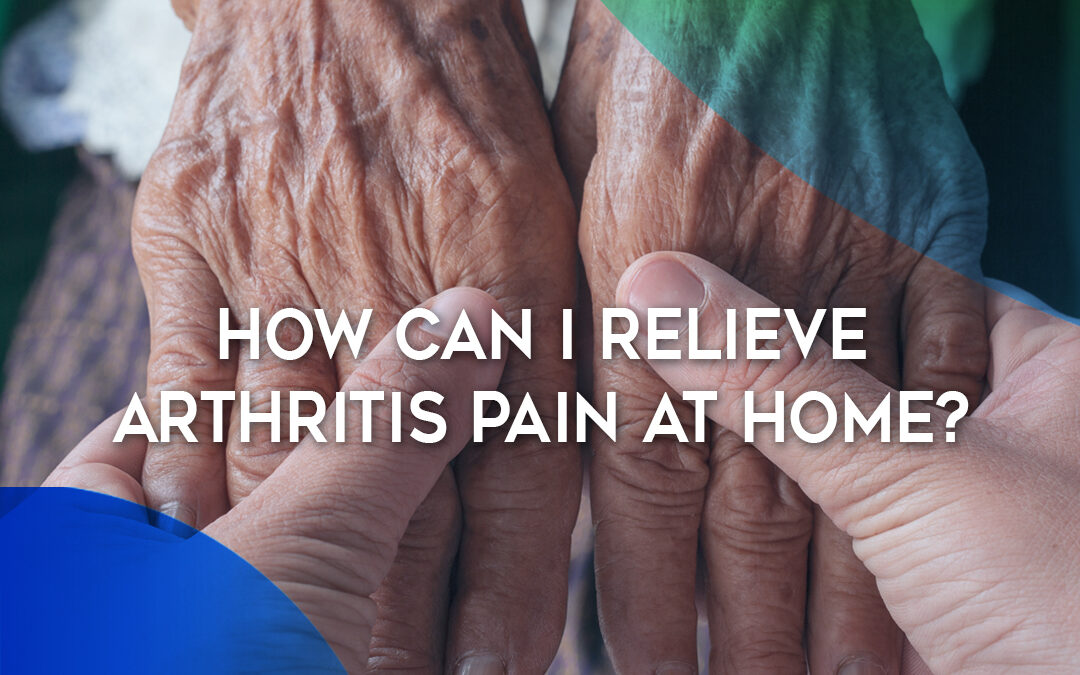Arthritis is an umbrella term that refers to multiple conditions that cause joint pain, swelling, inflammation, and stiffness. Conditions like osteoarthritis and rheumatoid arthritis are progressive, meaning symptoms worsen over time.
Living with arthritis can have a significant impact on your quality of life. You may find it difficult to walk around, drive, do chores, and perform other daily tasks due to pain and stiffness. You might have medically prescribed medications, injections, and physical therapy as part of your treatment plan to manage symptoms.
But aside from medical treatments, what are everyday things you can do at home to make your arthritis pain easier to bear? We have some answers below.
6 Home Care Solutions for Arthritis Pain
The following home treatment methods can help you find pain relief, stay active, and slow down the progression of arthritis.
1. Medications and topical solutions. Over-the-counter pain medications like ibuprofen or naproxen can help relieve joint pain flare-ups. And topical solutions with the ingredient capsaicin can be applied over arthritic joints to soothe the ache. Remember to be mindful of your pain medication usage. If you find yourself taking pain relievers frequently, it may be time to talk to your doctor about a more effective pain management solution.
2. Ice and heat therapy. Applying cold compresses to sore, achy joints can help relieve pain, swelling, and inflammation. You can use an ice pack or wrap a bag of frozen veggies in a towel for use several times a day, for 15-20 minutes at a time. Applying hot compresses to painful joints can help soothe pain and stiffness. Use a heating pad, warm compress, electric blanket, or take a hot shower or bath to feel the effects.
3. Low-impact exercise. Exercise keeps your muscles and joints strong and flexible, aids mobility, and reduces pain. The best joint-friendly exercises include walking, swimming, water aerobics, cycling, yoga, and tai chi. Try to avoid high-impact exercises like running or tennis that increase stress on the joints.
4. Weight management. Carrying extra body weight places more stress and pressure on arthritic joints. That stress leads to increased pain and joint damage. Exercise and eat a balanced, whole-food diet to maintain a healthy, stable weight. If you struggle with weight management, talk to your doctor about effective weight loss strategies.
5. Meditation and relaxation. Practicing meditation, mindfulness, and deep breathing can help you lower stress levels, decrease inflammation, manage pain, and cope with your chronic disease better. If you find it difficult to meditate on your own, consider attending a gentle yoga or tai chi class for guided meditation and breathing.
6. Alternative therapies. Alternative or complementary therapies are not part of standard medical care and treatment. But many forms of alternative medicines can help you manage pain, reduce feelings of stress or anxiety, and feel better and happier overall. Therapies like acupuncture, chiropractic care, massage therapy, and biofeedback could bring some measure of pain relief.
What Is the Next Step for Arthritis Pain?
The treatment methods listed above can help mask pain and symptoms, but they can’t prevent the disease progression of arthritis. If you’re ready to start treating the source of your joint pain — not the symptoms — find out if you’re a candidate for the iO-Core™ procedure.
iO-Core™ combines orthopedic methods with biologics to treat the underlying conditions that cause joint pain and promote healing from within. Traditional thinking treats arthritis as a “surface problem” caused by cartilage degeneration on a joint’s surface. Modern thinking recognizes that arthritis affects the entire joint and that underlying bone pathologies and bone damage must be addressed during treatment to provide long-lasting pain relief. The iO-Core™ procedure targets cartilage loss and underlying bone damage to promote optimal healing from the inside out.
iO-Core™ is minimally invasive, requires no hardware or implants, and has minimal to no down time after the procedure. The procedure has seen excellent results for reducing pain, restoring mobility, and preventing further joint damage.
Find Out If You’re a Candidate for iO-Core™
Many people who were told they needed a total joint replacement surgery have found long-term pain relief and greater mobility from iO-Core™ instead. Contact our team today to learn more and see if you qualify.

